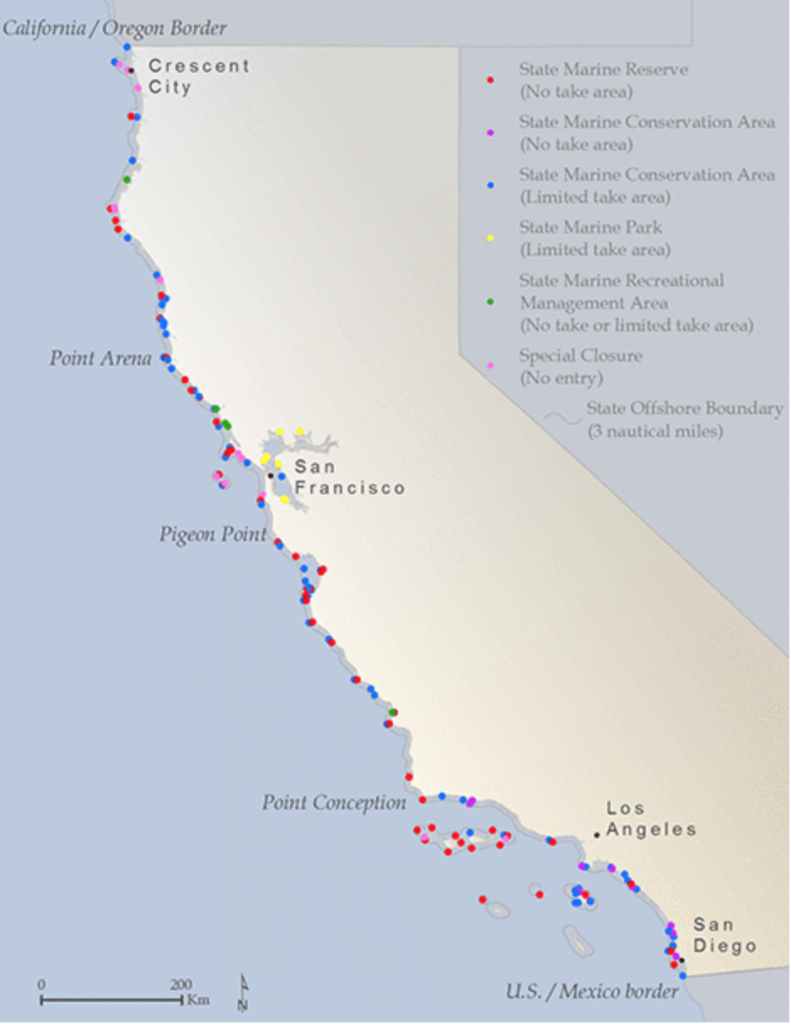
As we consider how to protect 30 percent of our coastal waters, California already has a great start – 16 percent of our state waters are protected in our Marine Protected Area network, the only one in the nation. Let's take a look at how this unique, important network came to be.
California’s coasts are among our most valued ecosystems and have come to define California’s history, culture and economy. Sadly, our coastal waters have become overfished, contaminated by runoff, and disturbed by recreational and commercial activities. These activities have impacted the health and value of California’s coastal ecosystems. Marine Protected Areas (MPAs) strive to combat these ecological threats by creating protected areas that conserve the coastal flora and fauna that inhabit our waters. MPAs are one of the most powerful tools used in ocean conservation policy today.
Starting in 1906, over 50 separate MPAs were established along California’s coastline, however these areas were established in random locations with little to no oversight and were too small to significantly impact the health of California’s coastline. By 1999, less than 1 percent of coastal waters were protected and none of these extended to deeper waters. There was little to no regional conservation effort or forethought with this previous system.
The Marine Life Protection Act was passed in 1999 and directed the state to streamline a network of MPAs in order to “increase coherence and effectiveness in protecting the state's marine life and habitats, marine ecosystems, and marine natural heritage, as well as to improve recreational, educational and study opportunities provided by marine ecosystems subject to minimal human disturbance” (California Department of Fish and Wildlife).

The California Department of Fish and Wildlife was tasked with the oversight and implementation of the Marine Life Protection Act with collaboration from the Ocean Protection Council and the Ocean Science Trust. For the first few years of the implementation process, there was hardly any input from the public about the locations, sizes, and management of these planned MPAs. This caused friction with many stakeholders including the commercial fishing industry, and the plan ultimately failed when it was brought to the public for approval.
It wasn’t until 2012 that California successfully completed its network of 124 MPAs strategically located along the coast using sound science and stakeholder input. The implementation plan proved to be a compromise between stakeholder groups, but was successful in that it took a more balanced approach than the first attempt and included input from government officials, commercial and recreational fishing interests, divers, ocean vessel representatives, harbormasters, scientists and educators. A complete report of the current network’s statistics and design processes can be found on the California Department of Fish and Wildlife's Website. The successful establishment of the MPA Network in California is one of the most intensive processes to ever be undertaken in ocean governance and sets an important precedent for global coastal conservation policy in the future.
But how do we know that these MPAs are doing their job in protecting ocean dwelling species? After the MPA network was established in 2012, specific funding was allocated towards the monitoring of the underwater ecosystems enclosed in the MPAs. The California Sea Grant partnered with the California Ocean Protection Council and California Department of Fish and Wildlife to monitor the temperature, ocean chemistry, abundance and locations of different species to determine the MPA’s health. The monitoring of the MPA network is conducted in two phases, the first being baseline monitoring, which establishes a benchmark against which future data can be compared, and the second being long-term monitoring which measures the future health of the underwater ecosystems.
Unsurprisingly, California’s network of MPAs is having a real and positive impact on coastal ecosystems. In 2010, the Proceedings of the National Academy of Sciences produced a report showing that MPAs have increased the size of local fisheries and had a net positive impact on underwater ecosystems. More recently, a study conducted at The University of California - Santa Barbara showed that Marine Protected Areas can actually help to increase fishing yields and profits while promoting sustainable fishing practices.
With both the state and federal government pledging to try to protect 30 percent of the world’s lands and oceans by 2030, the expansion of MPAs globally has huge potential to help us reach this goal. While there is still more to do to protect California’s coastline, maintaining our MPA network continues to be critical to safeguarding our coasts.



